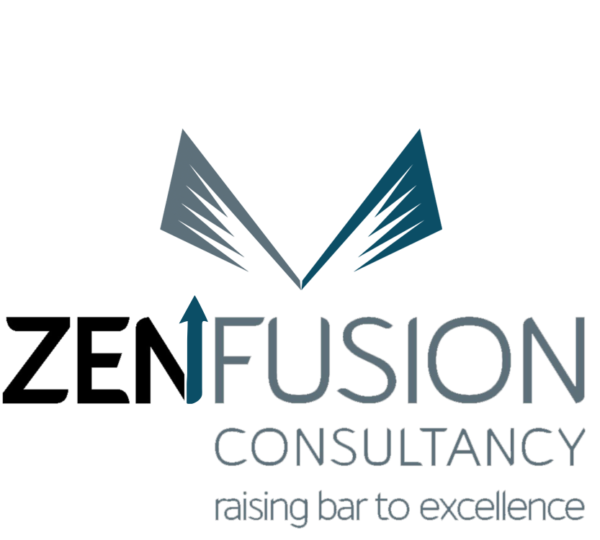
Developing Your Career Roadmap
Introduction
In competitive world right now, we need to stand out, we need to differentiate, we need to have human touch, and empathy. So altogether, we need to have some wings to fly and yet be humble enough to stay on ground. Hence, developing your career roadmap has never been so important as today. There is competition and there is a lot of competition. In case you live in a country where there is scarcity in jobs, then keep your fingers crossed, do a lot of visualizing, drink a lot of water and every day, strive and hustle. Let me be very honest.
Welcome to Your Career Journey
This journey outlines a framework, which is editable anytime. You need to have some focus therefore it is important to create a journey roadmap. Embark on a transformative exploration into crafting a roadmap that navigates your professional evolution. Your career journey awaits, filled with opportunities for growth and fulfillment.
Roadmap will not promise that you might not face obstacles, or jumps on your way. It will simply keep you focused, alert, active and moving in a direction. You can always opt to alter your route, add better diversions and smartly save time and money.
The Power of a Well-Crafted Roadmap
With the help of a coach what will be different from others, you will be able to envision. Envision with YOUR specific values, abilities and strengths. This will stay for long and with satisfaction. You see people around you, seemingly great in their lifestyle or job position, but struggling as there is no inner contentment. Discover the unparalleled impact of a meticulously designed career roadmap. Unveil the potential to steer your professional trajectory towards success and satisfaction.
This article is an extract from my upcoming book, I have arranged the chapters under sections.
Section 1: Understanding Your Starting Point
Where can you go, if you are not aware where do you stand right now. In google when you are finding a location it gauges from the place where you are standing or present.
Reflecting on Your Current Career Status
Assessing Strengths and Weaknesses as well as opportunities and threats.
When I conduct personality assessment, mostly leadership 360˚, my client gets surprised on unveiling their own personalities. They get shock because what they were thinking about themselves, and what their assessment has resulted, is an eye opener. DISC is another test we conduct for leadership evaluation and work on areas which need to be enlightened. You should too conduct a candid self-assessment to discern your strengths that serve as pillars of success and weaknesses signaling areas for improvement.
Identifying Passion and Interests
Feeding your passion is always healthy. It is your strength for weak times. Keeps you active and young. Delve into the realms of your interests and passions, unraveling the threads that can weave a tapestry of fulfillment in your professional life.
Setting Clear Career Goals
Short-Term vs. Long-Term Objectives
If you need to reach the sky, climbing a tree is what first needs to be achieved. In bigger visions, first steps are always the hardest. Break them down into smallest possible steps. Once this si achieved, next steps will be just easy to climb up quickly. Differentiate between short-term milestones and long-term aspirations, creating a strategic alignment that propels you toward enduring success.
SMART Goal Setting
Goals can become very intense and very much spread as well. Embrace the SMART criteria—Specific, Measurable, Achievable, Relevant, and Time-bound—to crystallize your goals into actionable steps.
Section 2: Mapping Out Your Skills and Competencies
Conducting a Skills Inventory
Sit, think and meditate about yourself. What have you been doing since childhood? What did you enjoy most? How much have you practice something which is now your part?
We are all blessed with many skills. Some of the skills we have not been able to polish but still they are there in us. Explore the versatility of your skill set, recognizing how your abilities seamlessly transfer across diverse professional landscapes.
Filling up the Skill Gaps
Determine the areas in which skill shortages exist and develop a plan for ongoing skill development.
Accepting Life Long Learning
Making Most Of Online Courses and Certifications
Take use of the dynamic tools that online courses and certifications can provide to keep up with industry trends and technological breakthroughs.
Mentoring and Networking To Elevate Skillsets
Create deep ties within your field by using networking and mentoring to foster a rich environment for talent growth.
Section 3: Examining Potential Career Paths
Researching Various Different Career Routes
Growing Industries
Investigate growing sectors that show promise for expansion and match your goals with those that are expected to become significant in the future.
Examining Non-Traditional Employment
Subvert standard career norms by exploring non-traditional career pathways and exploring unexplored opportunities for professional fullfilment.
Matching Personal Values with Career Decisions
Seeking Your Why? Purposeful Work
Seek a deep feeling of purpose in your work by coordinating your professional path with deeply held personal beliefs.
Keep A Genuine Balance Between Passion And Practical
Strike a careful balance between pragmatism and passion to make sure your professional decisions reflect both your innermost aspirations and realistic considerations.
Section 4: Branding & Creating Personal Brand
Developing Online Visibility
Enhancing One’s LinkedIn Profile
Makeover your LinkedIn profile to make it an engaging display of your career path, accomplishments, and goals.
Highlighting Accomplishments and Proficiency
Create captivating stories that highlight your accomplishments and areas of expertise to build a strong online presence.
Enhancing Your Pitch for the Elevator
Defining Your Value Proposition
Learn how to communicate your unique value proposition clearly and concisely so that, even in short meetings, you make an impression.
Creating A Memorable Impact
Elevate your elevator pitch with genuineness and charisma to create lasting impressions on your audience.
Section 5: Successful Networking Techniques
Growing Your Network At The Workplace
Participating at Conferences and Industry Events
Attend conferences and events to keep your finger on the pulse of the industry and make contacts that go beyond the digital sphere.
Making Use of Social Media in Networking
Making Use of Social Media in Networking
Utilise social media sites to interact with colleagues and industry leaders and grow your professional network.
Developing Meaningful Connections
Building Relationships, Not Just Contacts
Build authentic ties that go beyond business dealings to create a network of supporters who are really interested in your success.
The Art of Effective Networking Conversations
Learn the tactful technique of striking up conversations in order to transform casual talk into genuine, meaningful encounters.
Section 6: Creating a Powerful Resume
Crafting a Tailored and Impactful Resume
Emphasizing Results and Achievements
Turn your CV into a compelling story of your achievements, highlighting measurable outcomes that demonstrate your worth.
Making Use of Action Verbs
Put some vigor into your resume by highlighting your proactive efforts in each employment with powerful action verbs.
Optimizing for Applicant Tracking Systems
Keywords and Phrases that Get Noticed
Use clever keywords and phrases to navigate application tracking systems and make your resume stand out from the digital competition.
Designing a Visually Appealing Resume
Draw attention with an eye-catching resume design that strikes a mix between style and substance.
Section 7: Mastering the Art of Interviews
Preparing for Common Interview Questions
Showcasing Your Problem-Solving Skills
Handle typical interview questions by demonstrating your proficient problem-solving abilities and projecting the image of a solution-focused professional. Handling Behavioral Questions
Craft compelling responses to behavioral questions, weaving narratives that demonstrate your past experiences as valuable learning opportunities.
Building Confidence and Professional Presence
Body Language and Communication Tips
Develop your communication and body language abilities so that you can convey professionalism and confidence in every situation.
Navigating Virtual Interviews
Acclimatise yourself to the subtleties of conducting interviews virtually and become an expert at establishing genuine connections through screens.
Section 8: Negotiating Job Offers
Researching Salary Expectations
Knowing Your Market Value
Identify your market value by conducting in-depth research, which will enable you to successfully negotiate salary packages.
Negotiation Do’s and Don’ts
By following the fundamental do’s and avoiding typical mistakes that could weaken your position, you can successfully navigate the delicate art of negotiation.
Considering Non-Monetary Benefits
Evaluating Work-Life Balance
Make work-life balance a top priority and a perk that cannot be compromised in order to make sure your career path and general well-being are compatible.
Understanding Bonus Structures
Understand bonus structures so that you can make well-informed decisions that maximise your total pay.
Section 9: Thriving in Your Chosen Career
Setting Up for Success in Your New Role
Establishing Early Goals
Establish early goals in your new position and make a success plan that fits with the aims of the company to get off to a quick start.
Building Positive Relationships with Colleagues
Encourage good relationships among coworkers to create a cooperative and encouraging work atmosphere.
Embracing a Growth Mindset
Seeking Feedback for Continuous Improvement
Accept criticism as a tool for ongoing development and cultivate a growth mentality that will advance your career.
Seizing Opportunities for Advancement
As you strategically position yourself for advancement within the organisation, keep an eye out for possibilities to improve in your career.
Conclusion
Celebrating Your Career Achievements
As you celebrate the turning points in your career path, take stock of your achievements.
The Ever-Evolving Roadmap: Adapt, Grow, Succeed
Recognise that your career plan is dynamic and that it must change over time in order to attain long-term success.
If this article has added value to your thoughts and way forward, let me know in comments box. If there is anything unclear, ask. Also, share it with your network so more people may learn from it.




